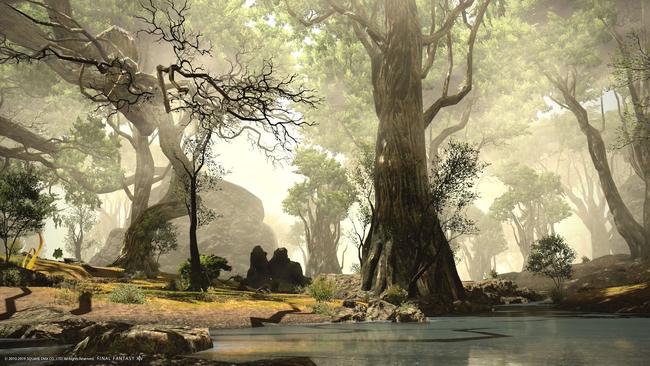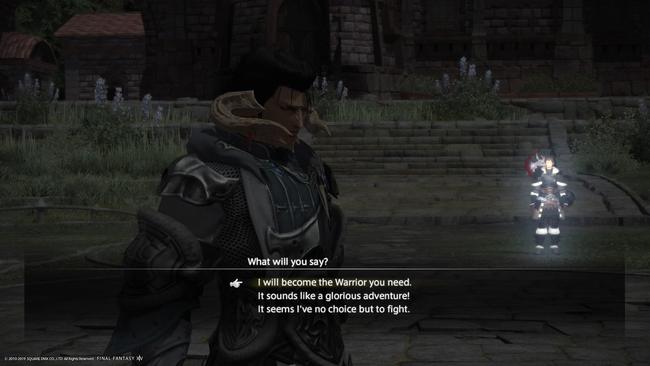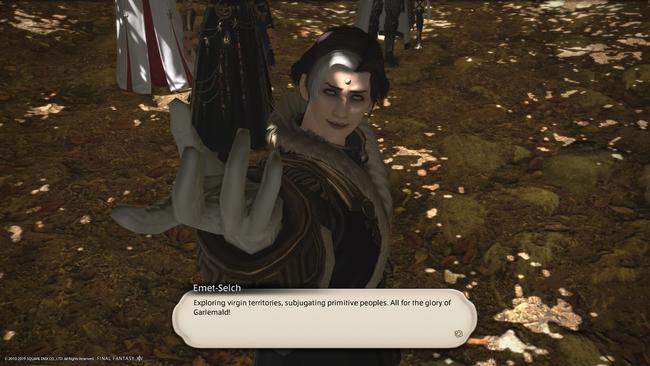
Final Fantasy XIV: Shadowbringers Review
I want to preface this review by saying this is currently a review in progress as Shadowbringers has not yet reached its narrative conclusion. There is still a plethora of unreleased content that will be added in the future that will contribute to a more cohesive final opinion and review. Subsequent updates will follow with the release of major updates to the expansion.
When I try to summarize my feelings about Shadowbringers it’s hard to come up with a complete and cohesive way to discuss all of the narrative, gameplay, and restructured jobs. Final Fantasy XIV has undergone so many different changes; from its origins as a failed MMORPG in 2010, to what it is now in 2019 - a mechanically dense and ultra-popular massively multiplayer RPG - Shadowbringers builds on the foundations of A Realm Reborn and other subsequent expansions like Heavensward and Stormblood. While it is definitely an improvement over Stormblood in a myriad of ways, Shadowbringers suffers from some of the similar plights of its predecessors.
(Minor story spoilers)
Shadowbringers begins immediately as Stormblood ends - your companions, the Scions of the Seventh Dawn, are mysteriously falling into a comatose-like state and you, the Warrior of Light and savior of Eorzea, are desperate to find out why. For those of you that are completely new to Final Fantasy XIV this probably won’t make any sense to you. Final Fantasy XIV’s story-telling relies heavily on previous expansions and the narratives are interwoven throughout. In fact, one of the most prominent and important figures in Shadowbringers was part of a short-lived story in a Heavensward update, of all things. This is why I would highly advise if you’re looking to get into Final Fantasy XIV you start from the beginning and avoid using the story and level jumps offered to you in the cash shop. If you want the full and complete experience it’ll require dedication and a lot of time, but you’ll ultimately be better off.
Returning and active players will be pleased to know that the world building in Shadowbringers is immediate. Right away you’re thrust into the unfamiliar world of Norvrandt, and XIV's newest chapter wastes no time in explaining the intricacies of this new landscape. Through side-quests I learned about the individuals of The Crystarium and Eulmore (the new playerhubs for this expansion) and their different functioning societies.
(Minor story spoilers end here)
While early quests in these areas are generally fetch quests with a little more dialogue than A Realm Reborn, I only did these to level up when I had exhausted all of the bonus experience from my daily roulettes. This is something I want to mention regarding Shadowbringers - experience given through side quests in this new expansion are sync’d to provide only a set percentage regardless of your character level. Grinding was absolutely necessary for me to progress the story, and as anyone familiar with Final Fantasy XIV knows that almost everything is locked behind story progression. It wasn’t a huge detriment since I had a lot of time to spend with the game, but it was a mild annoyance in comparison to how quickly I had leveled up Machinist during the Heavensward expansion, and Samurai during Stormblood. Maybe this was implemented to get players to spend more time leveling up secondary jobs, but I can’t say for sure. I will say however that it has made leveling up a bit more tiresome and somewhat discouraging.
Unlike the early expansion questing experience, the dungeons introduced in Shadowbringers are undoubtedly my favorite in the history of the game. In comparison to A Realm Reborn or Heavensward, they’re much more compact and allow for quicker execution with the right synergy between party members. The Trust system has also been implemented in this expansion, which features the option to take some of the major story characters in Final Fantasy XIV: Shadowbringers with you into dungeons, giving you the option to run content solo. I used this for two of the four story dungeons, finding it an efficient method to farming gear (as all item drops automatically go to you since you aren’t sharing any rolls with other players), and I never had any issue clearing content with the A.I. companions. I should mention that I tried out both the White Mage and Summoner during the dungeons so my amount of crowd control or AoE damage was arguably fairly high throughout, and when using the Trust system I rarely ever had to heal the A.I. tank. I had a blast playing these two jobs; figuring out how to weave new skills into my rotation for Summoner was enjoyable, and White Mage has never felt more involved or powerful.

However, the same can’t be said for the other healing jobs in Final Fantasy XIV. I spent my first few hours in the game looking over what had been rebalanced and changed, and while overall clutter has been reduced in terms of pure volume, some jobs have lost what made them unique. A lot of what I enjoyed about Scholar, for example, has been changed or completely removed from their kit and I’m still having a hard time figuring out how to adjust. It will probably take more time and dedication to the role, but for now I’m just enjoying the raw explosive power and the healing efficiency of White Mage too much to go back. Even during the EX Primal Trials (more difficult versions of the standard Trials you’ll encounter through the story) my role as a White Mage felt infinitely more involved and mechanically complex. It was a nice deviation of how I would play my job in the more challenging content of previous expansions.
The two new jobs of Shadowbringers, Dancer and Gunbreaker, are welcome additions that provide their own unique mechanics and contributions to dungeons and raids. Dancer is arguably the most unique job within the game as a whole -- Bard does share some similarities regarding buffs -- but for the most part the Dancer playstyle is heavily reliant on RNG and completing “steps” or dance routines during combat to keep your individual buffs active. I feel like this job is more or less a true support over a DPS, while they certainly are capable of dealing damage, Dancers can heal and shield their dancing partner which can sometimes make or break the flow of combat if it comes to saving a tank or healer from an unfortunate misstep. Gunbreaker, on the other hand, is somewhat reminiscent of the Warrior during Heavensward, feeling more like a DPS and tank hybrid over a true tanking class like Paladin or Dark Knight for example. While I’m still feeling this job out, it’s something I was highly looking forward to due to my fondness for Final Fantasy VIII. This does, however, lead me to something of a complaint with Shadowbringers and the consistent structure of Final Fantasy XIV’s story.
(Minor and Major story spoilers ahead)

While I am enjoying Shadowbringers more overall so far than my time with Stormblood, I feel like that doesn’t say much in terms of the overall narrative quality of this expansion in particular. The strongest moments of Final Fantasy XIV’s narrative and concepts undoubtedly pulls inspiration from other mainline titles such as Final Fantasy X, Final Fantasy IX, or even game adjacent media like Advent Children for some of the especially thematic scenes. You’ll find traces of previous games in the musical score and environments with the Crystal Tower and Mt. Gulg being the most obvious. It was hard for me to personally discern if I enjoyed these moments, landscapes, and homages because of my familiarity with other mainline entries, or if it was because I actually liked their presentation within the world of Eorzea. In this way, the constant inclusion of elements from other Final Fantasy titles works to the detriment of Final Fantasy XIV’s narrative, as I feel the original material often misses the mark when removed from the inspirations borrowed from the series's long history.
One of Shadowbringer’s greatest narrative pitfalls is in how it chooses to frame its antagonists. There is a lack of any real accountability held in response to those in Novrandt actively participating in classist or colonial systems, but that might change with future updates. However, Shadowbringers still asks players to sympathize with factions that actively participate in genocide and spew fascist ideologies, begging us to consider both sides when we are met with dehumanization. While there is some criticism of bureaucracies idly standing by as the world begins to crumble and fall to ruin, this is more or less an excuse used by the antagonist to push their own extreme methods. This serves as an overlying theme to the expansion, to consider if what we, the Warrior of Darkness and Warrior of Light, are doing what is truly good and if, perhaps, the Ascians and their vast history of genocide and colonialism are not the villains we believe them to be.

Regardless, Shadowbringers ends in a similar fashion as most of the X.0 expansions - you save the day after your companions give an emboldened speech in a scene that carries the same narrative footprints reminiscent of most other Final Fantasy titles, you are victorious (at least for now) and the resolution is clear. Old plot threads are resolved as others being to unravel, and new possibilities to where the narrative will go begin to open up. My experience with the story itself wasn’t entirely negative, there were some things within the overarching narrative I did enjoy. One NPC character, in particular, kept me motivated to keep going through the story. As any time they would appear the dialogue shared with them was something that often times made me emotional. With the new inclusion of Role Quests, I also learned about Norvrandt’s original Warriors of Darkness, a set of characters that I had been interested in from Heavensward onward, so having the opportunity to see more of their individual narratives fleshed out (even if it was just through flashbacks) was something that was really exciting.
(Minor and Major story spoilers end here)
Speaking of Norvrandt, the environments in Shadowbringers are absolutely breathtaking in some areas. Bright palettes of lavenders and pinks wash fields with a vibrancy unfound in Eorzea and the forests of the Rak’Tika Great Wood has some of the best use of environmental lighting I’ve seen in the game as of yet. All of these areas are also accompanied by their own unique music which contributes to the overall atmosphere and environmental world building. Some of these tracks truly show composer Masayoshi Soken at his finest as they truly encapsulate the different cultures and the general mood of Novrandt that makes it feel like we in a place different from the one we’ve grown familiar with throughout subsequent expansions. The unique trial themes Soken has created for Shadowbringers are some of my favorites throughout the game, and I’m genuinely excited to see what kinds of compositions will grace future updates. I really cannot stress enough how wonderfully these two elements work in tandem with one another to create an experience all its own.
I feel like it is important to mention that the end game content of Final Fantasy XIV has returned with largely the same routine -- once you hit the end of the main scenario, the grind for in-game currency to redeem better gear to progress to harder or new content begins. Treasure maps are still present, as are FATEs and hunts to pad out your time spent in the game, but it's the same experience from Heavensward onward. As it stands there are no big additions that redefine the end game in any way, so if you're expecting something largely different from what was present in Heavensward or Stormblood, you're not going to find it here.
Overall, Final Fantasy XIV: Shadowbringers is the most fun I’ve had with the game yet with my time in the finely tuned dungeons and trials being a highlight. While the overall themes and execution of some narrative elements leave something to be desired regarding their presentation and message, the wonderful musical score, gorgeous environments, and interesting new class mechanics elevated my enjoyment despite these shortcomings. All told, Shadowbringers's first chapter sets the bar high as a foundation for future updates to come.